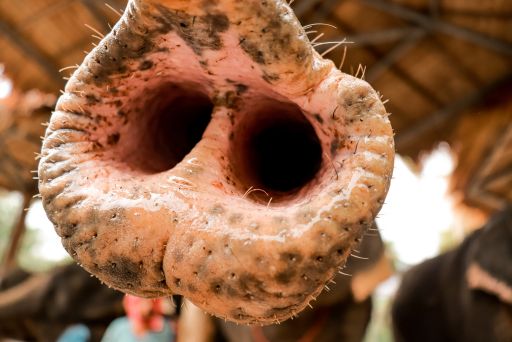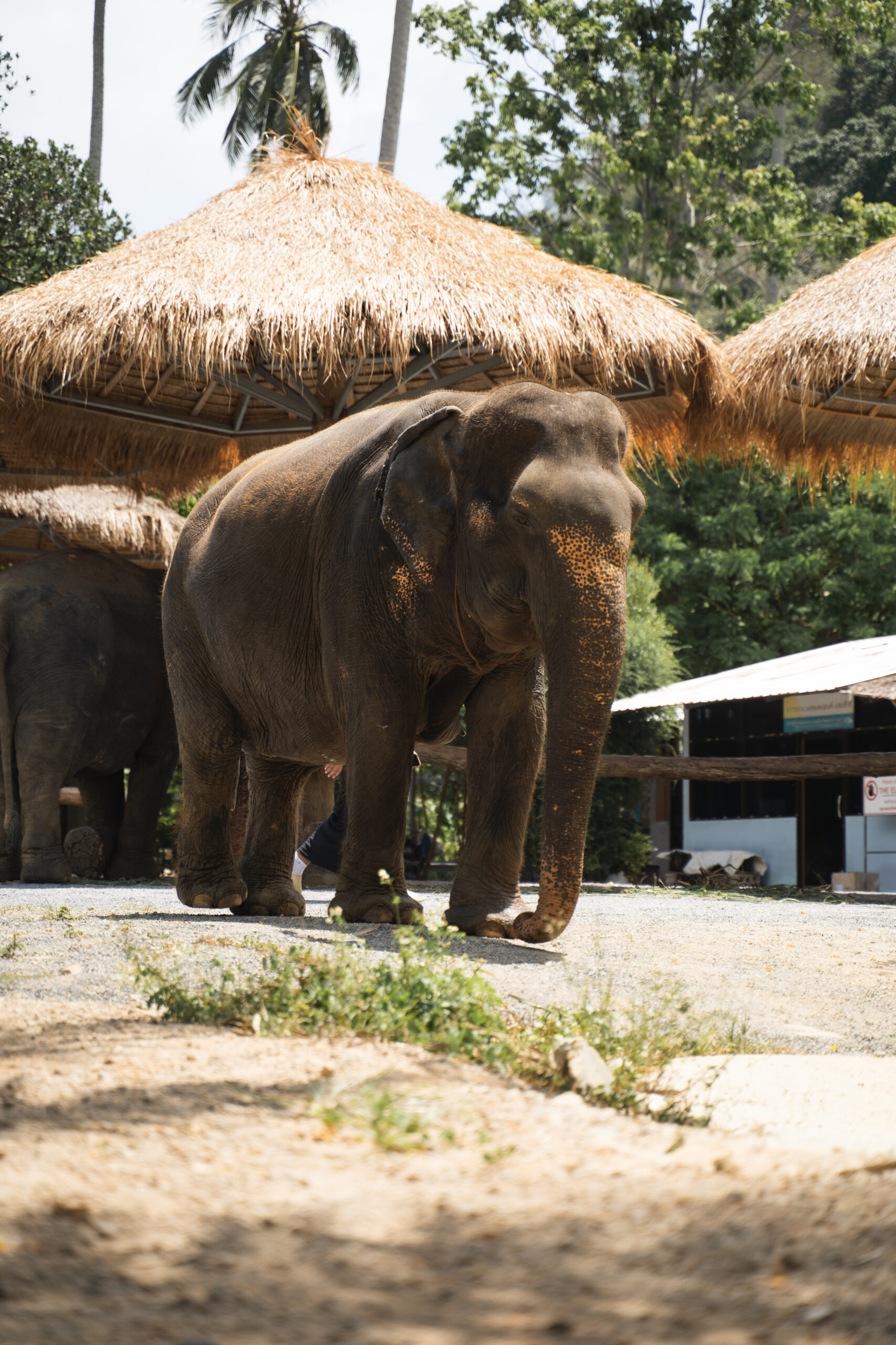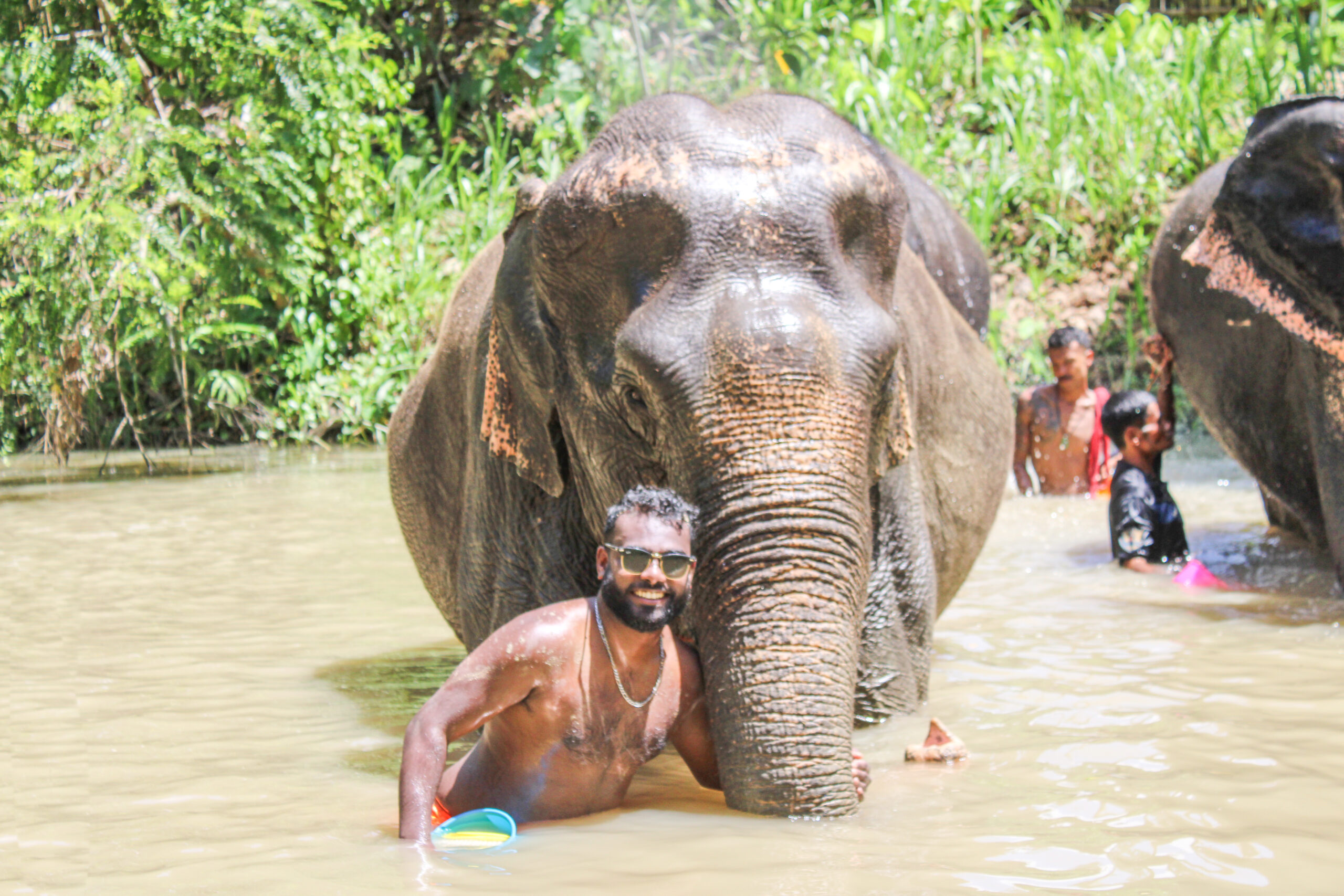
Elephants, especially baby elephants, are truly fascinating creatures. These adorable little creatures are born weighing around 200 pounds, which may sound hefty but is only a fraction of what they will weigh as adults. As they grow, baby elephants can gain up to three pounds a day! They have an insatiable appetite and will nurse from their mothers for the first few years of their lives.
Another incredible fact about baby elephants is their strong social bonds. They are extremely friendly and playful, often engaging in fun activities with their fellow elephant calves. These playful interactions help them develop important social and communication skills that they will need as adults. Just like us humans, baby elephants also need their sleep. However, their naps are quite short, usually lasting only a couple of hours. With their endearing charm and curious nature, it’s no wonder that baby elephants continue to captivate the hearts of people all around the world.
The Life Cycle of Baby Elephants
Baby elephants go through a fascinating life cycle that is filled with interesting milestones. It all begins with the birth of a calf, which typically takes place in a protected and safe environment within the elephant herd. The mother elephant, known as a cow, provides essential care and nourishment to her baby.
During the first few years of life, baby elephants undergo rapid growth, which is evident in their increasing size and strength. They start experimenting with their physical capabilities, often engaging in playful activities with their fellow young elephants. As time goes on, baby elephants become more independent and learn valuable skills from their herd, including how to use their trunks proficiently and how to interact socially. It is truly fascinating to witness the various stages of a baby elephant’s life and the remarkable transformations they undergo.
Habitat and Natural Environment of Baby Elephants

Baby elephants are incredible creatures that thrive in diverse habitats and natural environments. These magnificent animals can be found across various regions of Africa and Asia, adapting to a range of landscapes from dense forests to open grasslands. In Africa, they wander through the savannah, while in Asia, they traverse forests and mountainous terrains. Baby elephants are highly adaptable, making the most of their surroundings to ensure their survival and growth.
The habitat and natural environment play a crucial role in shaping the behavior and development of baby elephants. These habitats provide abundant food sources, such as grasses, leaves, and fruits, which are vital for their growth and nutrition. Additionally, the diverse vegetation within their surroundings ensures a rich and varied diet, promoting healthy physical development. The natural environment also offers opportunities for baby elephants to socialize, play, and learn crucial skills from their herd, preparing them for their future roles in the ecosystem.
• Baby elephants can be found in diverse habitats across Africa and Asia
• They adapt to different landscapes, including dense forests and open grasslands
• In Africa, they roam the savannah, while in Asia, they traverse forests and mountains
• Baby elephants are highly adaptable and use their surroundings to ensure survival and growth
The habitat and natural environment of baby elephants play a crucial role in shaping their behavior and development. These environments provide abundant food sources such as grasses, leaves, and fruits that are essential for their growth and nutrition. The diverse vegetation within their surroundings ensures a rich diet, promoting healthy physical development.
In addition to providing food sources, the natural environment offers opportunities for baby elephants to socialize with other members of their herd. Socialization is vital for these young animals as it allows them to learn important skills from older members of the group. Through playtime with peers or interactions with adults, baby elephants develop essential behaviors that will prepare them for their future roles within the ecosystem.
Moreover, the natural environment serves as a classroom where baby elephants can learn crucial skills necessary for survival. They observe how older members navigate through various terrains or interact with different species around them. This observational learning helps them understand potential dangers or identify suitable resources within their habitat.
Overall, the habitat and natural environment of baby elephants contribute significantly to their well-being by providing ample food sources, opportunities for socialization with other herd members, as well as valuable lessons on survival skills needed throughout their lives.
The Importance of Baby Elephants in Ecosystems
Baby elephants play a vital role in the ecosystems they inhabit. As herbivores, they have a significant impact on the vegetation around them. These adorable creatures consume large amounts of plants daily, which helps control the growth of certain plant species. By selectively feeding on grasses, shrubs, and trees, baby elephants help maintain a balanced and diverse ecosystem. Additionally, their dung acts as a natural fertilizer, enriching the soil and promoting plant growth in the process. In this way, baby elephants contribute to the overall health and sustainability of their habitats.
Furthermore, the presence of baby elephants has an indirect effect on other species within their ecosystems. As they move through the landscape in search of food and water, they create pathways and clearings, altering the physical environment. These changes in the vegetation structure provide opportunities for other animals to access resources that may have been previously inaccessible. This not only benefits other herbivores but also carnivores that rely on the presence of prey species. Therefore, the presence of baby elephants not only shapes their environment but also contributes to the overall biodiversity and interconnectedness of the ecosystem they inhabit.
The Threats Faced by Baby Elephants

Baby elephants, these adorable and innocent creatures, face numerous threats in their fragile existence. One of the biggest threats comes from the illegal wildlife trade, where baby elephants are often captured and sold for their ivory tusks. This ruthless practice not only causes immense harm to the individuals but also disrupts the social dynamics of their herds, leaving them vulnerable and defenseless against other dangers.
In addition to the brutal wildlife trade, baby elephants also face habitat destruction as a major threat. Rapid urbanization and deforestation have resulted in the shrinking of their natural habitats. As their homes are destroyed, baby elephants are forced to wander in search of food and water, leading to increased conflicts with humans. These conflicts often result in tragic consequences, as both humans and elephants lose their lives in the struggle for survival. The loss of their habitat also means a loss of critical resources for their growth and development, pushing them further toward the brink of extinction.
Conservation Efforts for Protecting Baby Elephants
Conservation efforts play a crucial role in ensuring the survival and well-being of baby elephants. These magnificent creatures face numerous threats, including habitat loss, poaching, and human-wildlife conflict. To protect baby elephants and their habitats, various organizations and governments around the world are taking proactive measures.
One of the most notable conservation efforts for baby elephants is the establishment of protected areas and national parks. These designated spaces provide a haven for these animals to thrive and reproduce. Additionally, rigorous anti-poaching initiatives and stricter law enforcement help curb the illegal wildlife trade, which remains a major threat to baby elephants. Collaborative efforts between local communities, conservation organizations, and governmental agencies also focus on raising awareness and educating people about the importance of these gentle giants and their ecosystems. Through these collective actions, we can ensure a brighter future for baby elephants and their vital role in sustaining our natural environment.
The Role of Baby Elephants in Socializing and Learning
Baby elephants are highly social animals, and their role in socializing and learning is quite fascinating. These adorable creatures form strong bonds with their family members, particularly their mothers, grandmothers, and siblings. They engage in playful activities, such as chasing each other, splashing in water, and even mock fighting, which helps them develop their motor skills and build relationships within the group.
Furthermore, baby elephants learn essential life skills from their herd members. They observe and imitate the behavior of older elephants, picking up vital knowledge about finding food, avoiding predators, and navigating their surroundings. These learning experiences are crucial for their survival and adaptation to their natural environment. Through socializing and learning from one another, baby elephants not only develop their physical and cognitive abilities but also establish social structures that are integral to their overall well-being.
The Unique Characteristics of Baby Elephants
Baby elephants are known for their adorable and unique characteristics that set them apart from other animals. One of the most fascinating features of baby elephants is their long, floppy ears. These oversized appendages not only enhance their cuteness factor but also serve a practical purpose. Baby elephants use their ears to control their body temperature by flapping them to cool down on hot days. It’s a delightful sight to see these little ones trotting around with their floppy ears, looking charming.
In addition to their ears, baby elephants have another remarkable trait—their curiosity. These playful creatures are incredibly inquisitive and are always eager to explore their surroundings. From poking their trunks into bushes to investigating new scents and objects, baby elephants are constantly on a quest for knowledge. This curiosity not only helps them learn about their environment but also aids in their development and socialization. Watching a baby elephant playfully investigating its surroundings is a heartwarming reminder of the joy and wonder that can be found in even the smallest things.
Frequently Asked Questions
What are some amazing facts about baby elephants?
Baby elephants are adorable creatures with unique characteristics. They can stand and walk within hours of being born and are known for their playful nature. Did you know that baby elephants can suck their trunks, just like how human babies suck their thumbs?
What is the life cycle of baby elephants?
Baby elephants go through various stages in their life cycle. They are born after a gestation period of around 22 months and stay close to their mothers for several years. As they grow, they learn essential skills from their herd, including how to find food and protect themselves.
Where do baby elephants live and what is their natural environment?
Baby elephants typically live in diverse habitats, including grasslands, savannas, and forests. They rely on their natural environment for food, water, and shelter. These habitats provide the perfect conditions for the young ones to thrive and grow.
Why are baby elephants important in ecosystems?
Baby elephants play a vital role in maintaining the balance of ecosystems. As future adult elephants, they help disperse seeds and create gaps in the vegetation, allowing other plant and animal species to flourish. Their presence also helps regulate vegetation growth and contributes to nutrient recycling.
What threats do baby elephants face?
Unfortunately, baby elephants face numerous threats in the wild. They are vulnerable to predation by lions and hyenas, and their habitats are constantly under pressure due to human activities such as deforestation and poaching. These threats put the survival of baby elephants at risk.
What conservation efforts are in place to protect baby elephants?
Conservation organizations and wildlife authorities are actively working to protect baby elephants. They focus on anti-poaching initiatives, habitat preservation, and raising awareness about the importance of elephant conservation. These efforts aim to ensure a safe and secure future for baby elephants.
What role do baby elephants have in socializing and learning?
Baby elephants are highly social animals, and their early years are crucial for socializing and learning. They interact with other members of the herd, learning essential behaviors and communication skills. Through play and observation, they develop a strong bond with their family and gain valuable knowledge for their future.
What are the unique characteristics of baby elephants?
Baby elephants possess several unique characteristics that set them apart. They have large floppy ears and long trunks, which they use for grasping objects and communicating. Their adorable clumsiness and curiosity make them a delight to watch. Additionally, baby elephants have an innate sense of empathy and often display affection towards their herd members.





